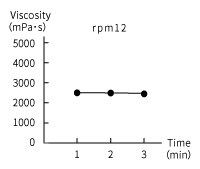Whether it be Japanese, Western, or Chinese food, there are many different types of sauces to bring out the delicious flavor of a dish. Demi-glace sauce, gravy sauce, oyster sauce, ‘gyudon’ sauce or beef bowl sauce, and ’unagi’ sauce or eel sauce are just some of the many sauces used for dishes from appetizers to desserts. How well sauces cling to food depends on the thickness of the sauce so the key to delicious sauce is its viscosity.
Without proper thickness, the sauce will not properly coat the food resulting in a bland flavor. Even sauces with same ‘umami’ flavor and amount of salt, the food the flavor will differ depending on its viscosity.
The viscosity of the sauce corresponds to how well it goes well the dish and it can vary from watery, non-viscous to very viscous sauces. To thicken a sauce, butter, cream, flour, corn starch or potato starch is used. Viscosity, changes depending on how much it has been heated so it is important be aware of the right timing to turn off the heat.
Viscosity of‘Tonkatsu’Sauce
VISCO™ measurement examples
Spindle : A1L
Sample temperature : 30℃



Customer comments
Our customer, a restaurant that offers Hamburg steaks uses the VISCO™ to manage their sauces, ‘tare’ (Japanese dipping sauce), and salad dressings. This customer is not only testing viscosity, but also carefully checking the concentration and salt content of their food.